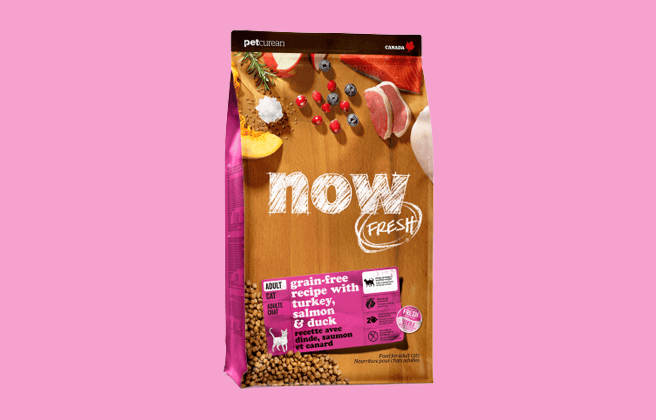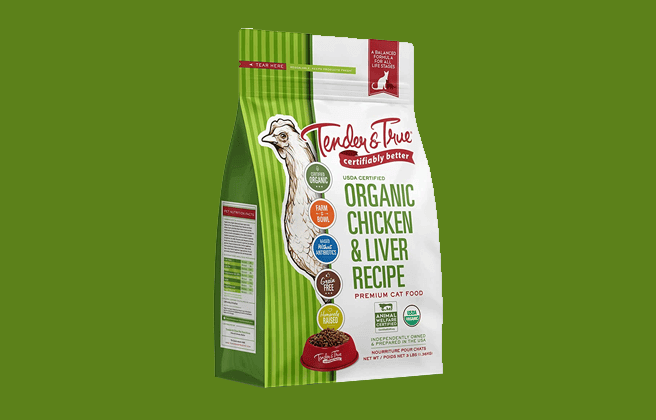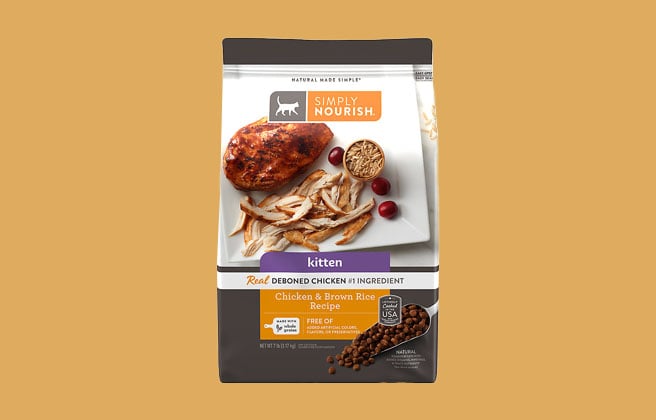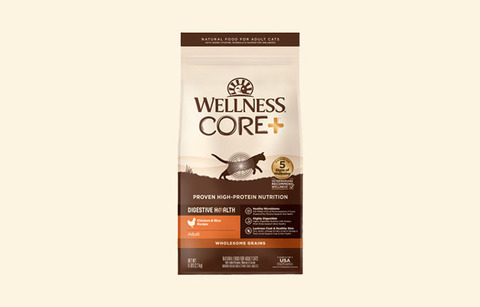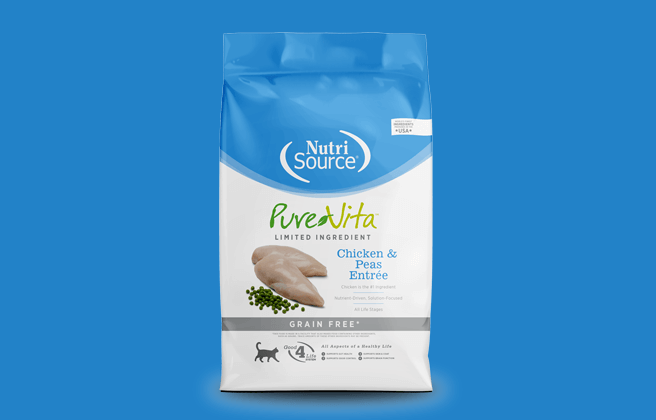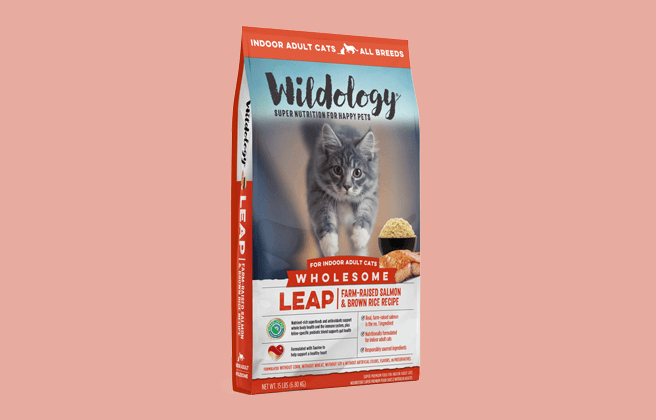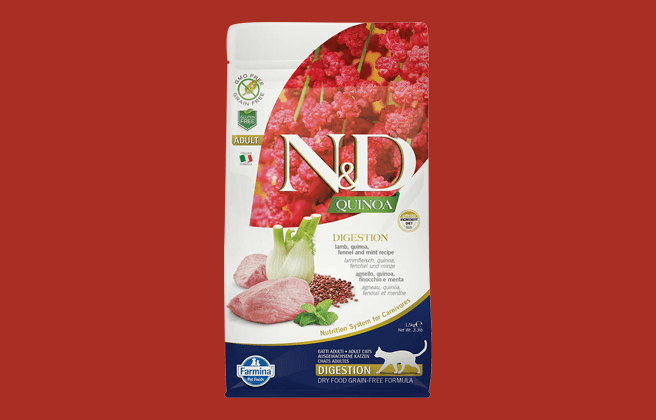
Our Verdict
The Farmina N&D Quinoa dry product range is made up of six recipes with ratings varying from 3.5 to 4 stars. The average rating of the whole range is 3.5 stars
Farmina N&D Quinoa provides support for specific conditions but does not require a veterinary prescription. All these foods use quinoa instead of other grain options. This range uses good quality meat that is listed as their first ingredient in each recipe.
Pros
- High quality ingredients
- Never had any product recalls
- Large range of recipes
- Limited fillers used
Cons
- More expensive than most cat foods
The table below shows each recipe in the range including our rating and the AAFCO nutrient profile: Growth (kitten), Maintenance (adult), All Life Stages, Supplemental or Unspecified.
| Product line | Rating | AAFCO |
|---|---|---|
| Farmina N&D Quinoa Digestion recipe - Lamb, quinoa, fennel and mint | 4 | M |
| Farmina N&D Quinoa Skin & Coat recipe - Herring, quinoa, coconut and turmeric | 3.5 | M |
| Farmina N&D QUINOA HAIRBALL - Duck, quinoa, apple and cranberry recipe | 3.5 | M |
| Farmina N&D Quinoa Urinary recipe - Duck, quinoa, cranberry and chamomile | 3.5 | M |
| Farmina N&D Quinoa Weight Management recipe - Lamb, quinoa, broccoli and asparagus | 3.5 | M |
| Farmina N&D Quinoa Neutered recipe - Duck, quinoa, broccoli and asparagus | 3.5 | M |
Recipe and Label Analysis
Farmina N&D Quinoa Digestion recipe – Lamb, quinoa, fennel and mint was selected to represent the other products in the line for a detailed recipe and nutrient analysis.
Label and nutrient data below are calculated using dry matter basis.
Farmina N&D Quinoa Digestion recipe - Lamb, quinoa, fennel and mint
Estimated Dry Matter Nutrient Content
Protein
Fat
CarbsCarbohydrates
Lamb (20%), dehydrated lamb protein (20%), pea starch, chicken fat, quinoa seed extracted (8%), dried eggs, linseed, dehydrated herring protein, fish oil (from herring), dried fennel (2.5%), dried mint (2.5%), inulin (0.6%), fructo-oligosaccharides (0.6%), yeast extract (source of manno-oligo-saccharides) (0.6%), psyllium husks and seeds, potassium chloride, dried brewers’ yeast, sodium chloride, calcium sulphate dihydrate, aloe vera extract, glucosamine, chondroitin sulphate. nutritional additives: vitamin A 18000iu; vitamin D3 1200iu; vitamin E 600mg; vitamin C 300mg; niacin 150mg; calcium d-pantothenate 50mg; vitamin B2 20mg; vitamin B6 8.1mg; vitamin B1 10mg; biotin 1.5mg; folic acid 1.5mg; vitamin B12 0.1mg; choline chloride 3000mg; beta-carotene 1.5mg; zinc (zinc chelate of hydroxy analogue of methionine): 163.80mg; manganese (manganese chelate of hydroxy analogue of methionine): 64.60mg; iron [iron(ii) chelate of glycine hydrate]: 58.30mg; copper (copper chelate of hydroxy analogue of methionine 15.80mg; dl-methionine, technically pure 7000mg; taurine 2500mg. Sensory additives: green tea extract 100mg; rosemary extract. antioxidants: tocopherol extracts from vegetable oils
Fiber (estimated dry matter content) = 1.9%
Red denotes any controversial items
Ingredients Analysis
The first ingredient is lamb. Lamb is considered “the clean flesh derived from slaughtered” lamb and associated with skeletal muscle or the muscle tissues of the tongue, diaphragm, heart or esophagus. 1
Lamb is naturally rich in all 11 essential amino acids required by a cat to sustain life.
The second ingredient is dehydrated lamb protein. Dehydrated lamb is considered a meat concentrate and contains more than four times as much protein as fresh lamb.
The third ingredient is pea starch, a paste-like, gluten-free carbohydrate extract probably used here as a binder for making kibble. Aside from its energy content (calories), pea starch is of only modest nutritional value to a cat.
The fourth ingredient is chicken fat. Chicken fat is obtained from rendering chicken, a process similar to making soup in which the fat itself is skimmed from the surface of the liquid.
Chicken fat is high in linoleic acid, an omega-6 fatty acid essential for life. Although it doesn’t sound very appetizing, chicken fat is actually a quality ingredient.
The fifth ingredient is quinoa seed extracted. Quinoa (pronounced keen-waa ) is not a true cereal grain but a plant prized for its gluten-free seeds.
Compared to most other grain-type ingredients, it is high in protein (about 12-18%), dietary fiber and other healthy nutrients.
The sixth ingredient is dried eggs, a dehydrated powder made from shell-free eggs. Eggs are easy to digest and have an exceptionally high biological value.
The seventh ingredient is linseed, another name for flaxseed oil. Linseed oil is one of the best non-fish sources of omega-3 fatty acids.
The eighth ingredient is dehydrated herring protein. Because it is considered a meat concentrate, dried herring contains almost 300% more protein than fresh fish itself.
From here the list goes on to include a number of other items. But to be realistic, ingredients located this far down the list (other than nutritional supplements) are not likely to affect the overall rating of the product.
This food also contains chelated minerals that have been chemically attached to protein. This makes them easier to absorb. Chelated minerals are usually found in better cat foods.
Recipe star rating 3.5
Nutrient Analysis
Based on its ingredients alone, Farmina N&D Quinoa Digestion recipe – Lamb, quinoa, fennel and mint looks like a near-average dry product.
The dashboard displays a dry matter protein reading of 35.9%, a fat level of 23.4% and an estimated carbohydrate level of 32.8%.
As a group, the brand features a near-average protein content of 37.1% and an above-average fat level of 15.9%. Together these figures suggest a carbohydrate content of 38.9% for the overall product line, alongside a fat to protein ratio of 44%.
This means Farmina N&D Quinoa contains near-average protein, above-average carbohydrate, higher than average fat, when compared to typical dry cat food.
Final Word
There are 6 recipes in this range which are formulated for adult cats. The recipes feature high quality meat protein sources such as chicken and lamb, in addition to fish.
The Cat Food Advisor recommends this cat food.
Has Farmina cat food been recalled in the past?
No. To the best of our knowledge, Farmina cat foods has never had a product recall.
You can view a complete list of all cat food recalls since 2021 here.
To stay on top of any cat food product recalls, sign up for our free email alerts, here.
About
In 1965 Francesco Russo founded Russo Mangimi, a company which specialized in animal nutrition.
In 1999, the company’s focus shifted to the pet food industry – its aim was to develop foods based on scientific studies around pet well-being. It then teamed up with Farmina, an English company, which specialized in food research and formulation.
Mangimi’s manufacturing facilities are based in Europe and Farmina foods are mostly sourced from Italy.
Sources
Best cat foods
We uphold the highest editorial standards when creating the authoritative content pet parents rely on and trust.
Every piece of clinical content on the Cat Food Advisor is reviewed by our certified Veterinary Advisory Board, which consists of licensed veterinarians and medically certified specialists.
Our reviews are completely independent; we are not paid by any pet food company to promote their products favorably. We do not accept money, gifts, samples or other incentives in exchange for special consideration. For more information see our Disclaimer & Disclosure page.







